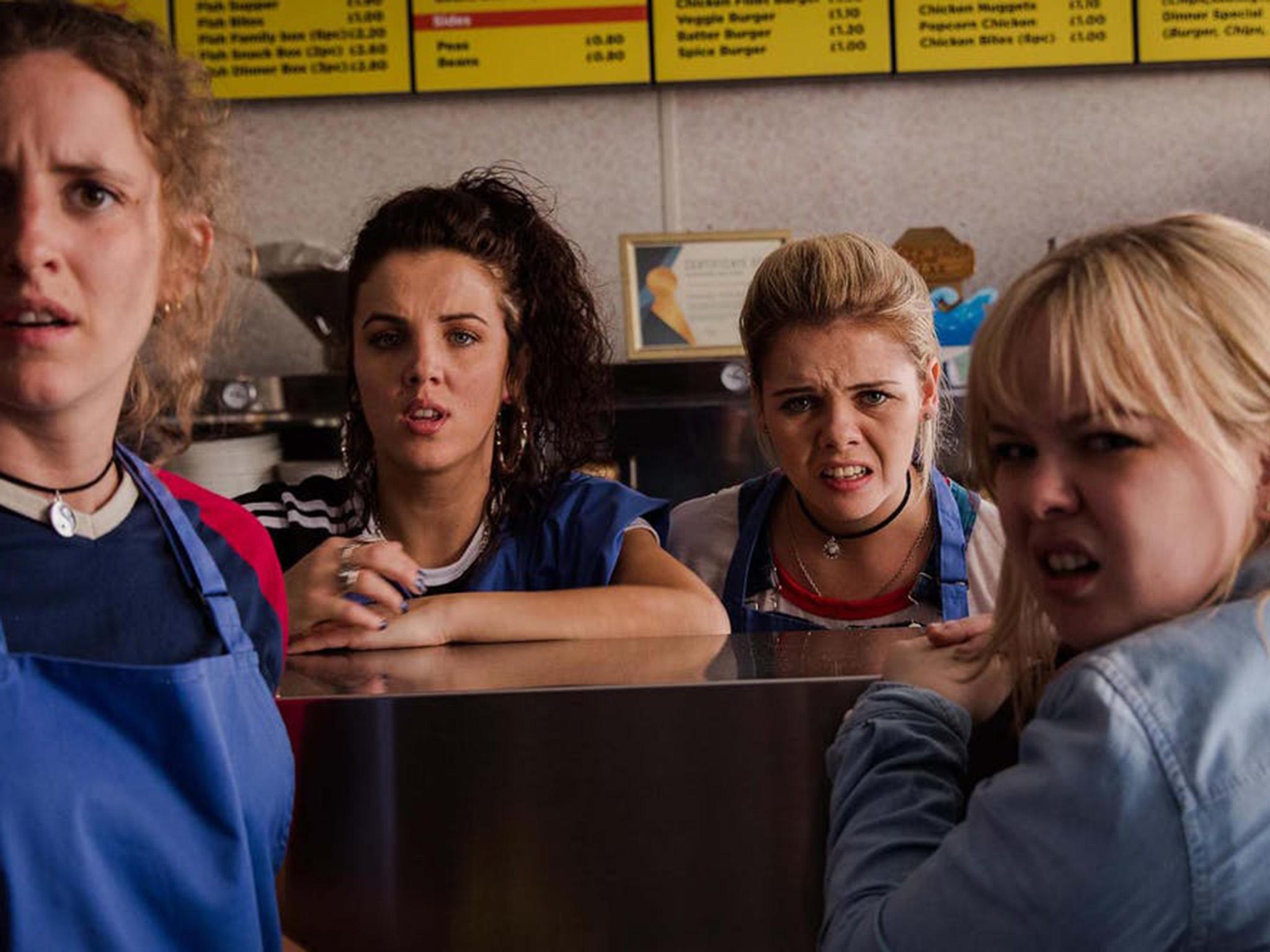Derry Girls: finally, a realistic comedy about being a young woman in Northern Ireland
The Channel 4 sitcom is nostalgic but it's also a truthful and funny representation of teenage girls growing up during the Troubles

Teenage girls are often left out of literary and cultural representations of Northern Ireland. Children, in books and drama set during the Troubles, are often symbols for the horrors of war or for hopes of a non-sectarian future. But teenage girls are different. They are seen as unruly, hormonal and morally transgressive, so they have the power to unsettle traditional ideas around identity in Northern Ireland. Channel 4’s new series Derry Girls allows them to be raucous, wild and deadly funny.
Right from the beginning, the show is pure Derry. From the shots over the famous walls and murals to the young men painting over the “London” on street signs to leave the town with it’s original name, “Derry”. Characters emphasise the small town nature of Northern Ireland’s second city (Derry/Londonderry/Stroke City/The Maiden City/Doire, however you like it). It is dense with 1990s nostalgia, from the soundtrack of The Cranberries and House of Pain, through the hoop earrings and mousse-scrunched hair to the relentless quoting from Pulp Fiction.
Recent years have seen a boom in 1990s nostalgia, as evidenced by the proliferation of think pieces on the availability of Friends on Netflix and the endless lists of “things only 90s kids understand” on Buzzfeed.
Bruno Mars and Cardi B’s recent hit "Finesse" is marked by its visual and auditory homage to 1990s hip-hop. Will and Grace has been revived, as have beloved film franchises such as Jurassic Park. Even hair scrunchies have become popular again.
In Derry Girls, this nostalgia is shot through with the reality of living during the Troubles. While early moves towards the peace process (such as the Hume-Adams talks) were ongoing during this period, it is still one marked by army patrols and the possibility of violence. Derry Girls’ protagonist, Erin, has been to enough cross-community workshops to ironically describe herself as a “child of the crossfire, surrounded by the conflict”.
A teenage girl’s modesty must be protected in the conservative faith traditions of Northern Ireland. The politician Bernadette Devlin’s age was often used against her, as she was given the moniker “Fidel Castro in a miniskirt”. Novels and films based on the Troubles often foreground teenage male protagonists, due to the drama of their potential involvement as paramilitary foot soldiers and the possibility of their refusing to take part in the conflict.
This is perhaps most potently realised in Bernard MacLaverty’s book Cal in which the eponymous protagonist grapples with sectarian violence, Catholic guilt and his attraction to a taboo widow. Even accounts of transgression, such as the joyous film Good Vibrations, focus on “teenage kicks” which are, almost exclusively, male.
Recent novels such as Glenn Patterson’s The Rest Just Follows and Tara West’s Fodder seek to redress the gender imbalance of these portrayals of punk’s adolescents in the same way that Derry Girls does.
Previous representations of teenage girls in Northern Irish texts include Sadie in Joan Lingard’s Across the Barricades series, which were mandatory reading in schools during the 1990s and presumably inspired Derry Girls’ “friends across the barricades” – a cross community initiative for teenagers.
Some films have also dealt with how young women have been erased from the popular canon of Northern Irish culture, such as Margo Harkin’s film Hush-a-Bye Baby, and The Venus de Milo Instead written by Anne Devlin and directed by Danny Boyle. And the 21st century has seen an upswing in texts which deal with Northern Irish teenage girls, such as the novels of Shirley Anne McMillan, the viral twitter account Norn Iron Girl 1981 and Anna Burns’ devastating No Bones.
The closest comparison to Derry Girls (although noticeably less profane) is Lucy Caldwell’s collection Multitudes, which is dense with 1990s teen ephemera (“strawberry lip balm from The Body Shop or Take That keyring from Athena”) and the small traumas of adolescence set against the wider context of the Troubles. Her short story Poison looks at the dark side of adolescent sexual obsession.
The vital thing about Lisa McGee’s writing is just how funny she allows her young, female protagonists to be, particularly in the final scenes with Sister Declan. She also allows them to have potentially transgressive desires, such as Michelle commenting on the soldiers: “Some of them are rides”.
To see young Northern Irish women pulling faces, making popular cultural references and deciding who gets to be “a ride” is refreshing and much more interesting than traditional representations of an adolescence marked by violence and sexual repression. During the Troubles, girls laughed, piled their hair high and had rampant crushes. Derry Girls, not a minute too soon, drags that back into the light.
Caroline Magennis is a lecturer in 20th and 21st century literature at the University of Salford. This article was originally published on The Conversation (conversation.com)
Join our commenting forum
Join thought-provoking conversations, follow other Independent readers and see their replies
Comments